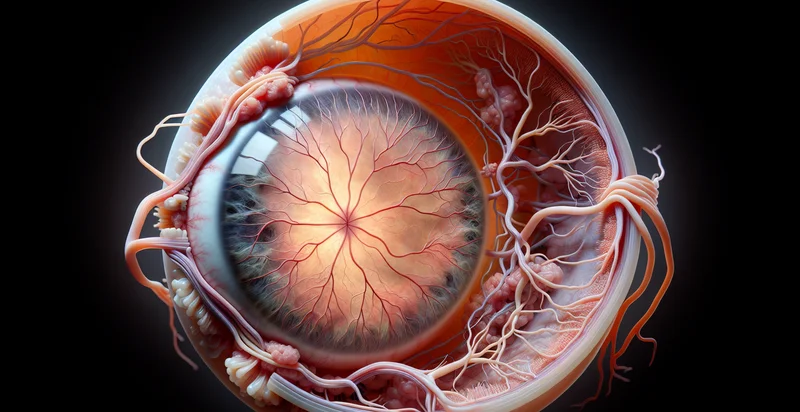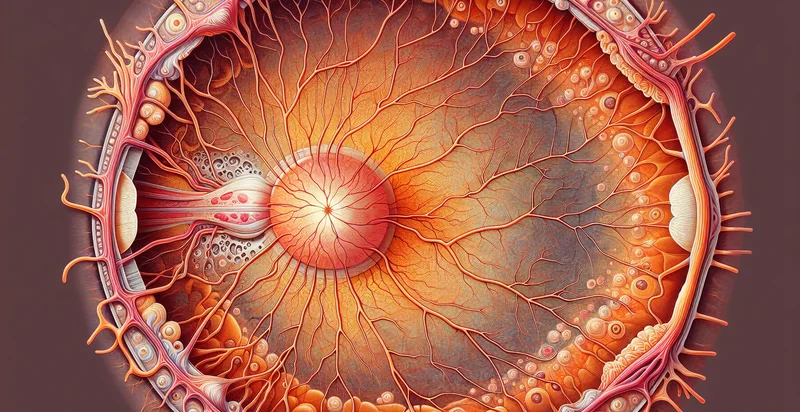Identify retinal detachment
using AI
Below is a free classifier to identify retinal detachment. Just upload your image, and our AI will predict if retinal detachment is present - in just seconds.

Contact us for API access
Or, use Nyckel to build highly-accurate custom classifiers in just minutes. No PhD required.
Get started
import nyckel
credentials = nyckel.Credentials("YOUR_CLIENT_ID", "YOUR_CLIENT_SECRET")
nyckel.invoke("retinal-detachment", "your_image_url", credentials)
fetch('https://www.nyckel.com/v1/functions/retinal-detachment/invoke', {
method: 'POST',
headers: {
'Authorization': 'Bearer ' + 'YOUR_BEARER_TOKEN',
'Content-Type': 'application/json',
},
body: JSON.stringify(
{"data": "your_image_url"}
)
})
.then(response => response.json())
.then(data => console.log(data));
curl -X POST \
-H "Content-Type: application/json" \
-H "Authorization: Bearer YOUR_BEARER_TOKEN" \
-d '{"data": "your_image_url"}' \
https://www.nyckel.com/v1/functions/retinal-detachment/invoke
How this classifier works
To start, upload your image. Our AI tool will then predict if retinal detachment is present.
This pretrained image model uses a Nyckel-created dataset and has 2 labels, including Detached and Intact.
We'll also show a confidence score (the higher the number, the more confident the AI model is around if retinal detachment is present).
Whether you're just curious or building retinal detachment detection into your application, we hope our classifier proves helpful.
Related Classifiers
Need to identify retinal detachment at scale?
Get API or Zapier access to this classifier for free. It's perfect for:
- Early Detection in Ophthalmology Clinics: Implementation of the retinal detachment identifier in ophthalmology clinics can aid in the early detection of retinal detachment. By analyzing patient images, the tool can help ophthalmologists prioritize and schedule urgent cases, potentially preserving patients’ vision.
- Telemedicine Consultations: In a telemedicine setting, this image classification function can be integrated into the remote consultation process. It allows ophthalmologists to evaluate retinal images submitted by patients, offering immediate diagnoses and treatment recommendations without the need for in-person visits.
- Patient Monitoring and Follow-Up: The retinal detachment identifier can be used for monitoring high-risk patients who have previously experienced retinal issues. Automated analysis of follow-up images can track changes over time, ensuring timely interventions when retinal detachment is detected.
- Medical Training and Education: Medical schools and training programs can utilize this technology as an educational tool for teaching students about retinal conditions. By analyzing sample images with this identifier, students can learn to recognize early signs of retinal detachment and its implications.
- Insurance Claim Processing: Insurance companies can leverage the retinal detachment identifier during claims processing for ophthalmologic procedures. Rapid analysis of submitted retinal images can streamline the approval process, ensuring that claims for necessary treatments are processed efficiently.
- Research and Development in Ophthalmology: Researchers can use the retinal detachment identifier to analyze large datasets of retinal images for clinical studies. This can facilitate advancements in treatments and contribute to evidence-based practices through improved understanding of retinal detachment phenomena.
- Integration with Electronic Health Records (EHR): The retinal detachment identifier can be embedded into existing EHR systems, allowing for seamless integration of image analysis. This provides healthcare providers with immediate access to diagnostic information, improving clinical workflow and patient care outcomes.


